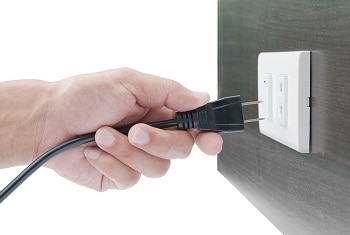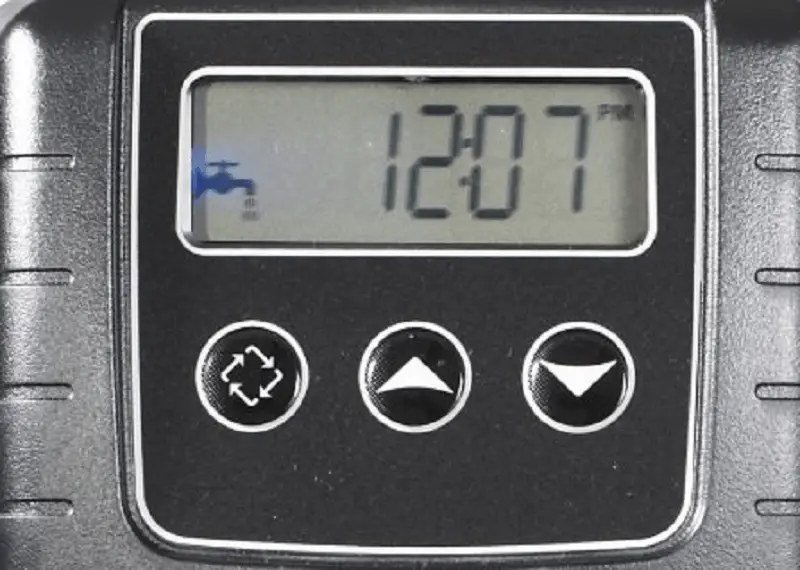Leaving your home unattended for any long period of time can be a little unsettling. Stopping the mail delivery, adjusting the thermostat so it doesn’t get too hot or cold, shut off this, unplug that, and then you look at your water softener. What should you do with your water softener to prepare it for while you are away?
Should I Turn Off My Water Softener When I Go On Vacation? A metered water softener will not regenerate when no water is used. A timed water softener will regenerate when it’s pre-set time says to. When leaving your home for an extended period, you should bypass your water softener and unplug it if it regenerates based on time and not usage.
We never want to come home after a great vacation and find that something bad has happened to our home while we were gone. Your water softener or other water treatment systems don’t have to be on your mind while you’re gone if you follow the correct precautions.
How to prepare your water treatment systems for when you are going to be away.
Bypassing your water softener:
Bypassing your water softener simply means that you are diverting the water from flowing through the water softener and instead the water will flow from the ingoing pipe, straight to the outgoing pipe.
Many water softeners have a single knob or lever to bypass the system, but others will have two knobs or a sliding piston bypass.
See your owners manual or my article I Hear My Water Softener Working, But I Still Have Hard Water for more on bypassing your water softener.
Since most water softeners meter your water usage to determine when they should regenerate, putting your system in bypass mode will stop your water softener from metering any water, and therefore the system will not regenerate unless it has an override feature.
Many digital water softeners will have an override feature so that even if you do not use any water, the system will regenerate once a certain amount of time has passed.
This feature is to help keep your water softeners resin clean when there is little to no water being used.
There are many digital systems that have this “override” feature, it can often be shut off quite easily if you are going to be away for an extended period of time. Check your water softeners owners manual or contact your water treatment professional for details.
How to tell your non-metered water softener not to regenerate.
Many basic water softeners use a simple time clock that trips a pin or tab every set number of days to tell the system to regenerate.
By moving all the pins or tabs to the off (in) position, you can leave your water softener plugged in but it will not regenerate.
If you plan on moving any pins or tabs, I suggest taking a picture of the pins and making a diagram of them before touching them so you will be able to reset them to the correct positions when you are ready to get your water softener running again.
Should I shut off the water to the house?
As long as your water shut off valve is in good condition, and there is nothing in your home that requires a supply of water, then it may be wise to shut off your water before leaving on a vacation.
I recommend testing your water shut off valve several days before you leave.
Shut off the water and turn on a sink faucet on an upper level of the house to avoid draining down the plumbing of the house. If the water stops completely after a few seconds, the valve is holding.
Does your water softener have a “Vacation Mode”?
You may not know it, but if you have a water softener with a digital display, it may have a “Vacation Mode” that when activated, will stop your water softener from regenerating while you are away on vacation.
On many digital systems, activating the vacation mode only takes a few steps. Enter program mode and advance to the vacation mode. Once there, just turn vacation mode “ON” and then advance out of the programming mode.
This vacation mode is available on most systems that have detailed programmability. If your water softener has the ability to show water usage history or customizable regeneration cycles, it very well may have a “Vacation Mode”.
Do I need to un-plug my water softener when I go on vacation?

If your water softener is non-digital and regenerates based on a pre-set day schedule, the simplest way to stop it from regenerating is to simply unplug it from its outlet. If you decide to un-plugging it, you will have to reset the time clock when you plug it back in.
Digital water softeners often have a battery back-up in them to save your water hardness and other program settings, but if you are going away for an extended period of time, you may have to re-program the hardness and clock when you plug the system back in.
Before un-plugging, a digital, check your owners manual to access your water softeners programming and write down the programmed hardness and any other setting that you will need to re-program when you plug the water softener back in.
Don’t let your water softener freeze!
In climates where the temperature can drop below freezing, be sure to keep the area where your water softener is located warm enough to prevent freezing. We often think about our pipes freezing, but your water softener can also freeze.
Water not circulating when you are gone can make water in your pipes freeze easier than when it is being used, so keeping your water softener as well as your plumbing warm enough when you are on vacation is more crucial than ever.
To add extra salt, or not to add extra salt, that’s a good question.
It is never a good idea to let your water softener run out of salt! See my article on What Happens If My Water Softener Runs Out Of Salt? to learn why.
But that doesn’t mean that it is a good idea to overfill your salt tank either.
If you are leaving on vacation, I advise that you bypass your water softener.
If your water softener is in bypass mode, it should not be needing any salt at all! But if you don’t plan on bypassing your water softener because you won’t be away for an extended period of time, fill your salt tank to about 3/4 full which should last for quite a while.
Overfilling your salt tank can encourage a salt bridge to form which will cause the water system to be deprived of salt in time and leave your water hard. This can lead to hard water stains and etching of glassware and water fixtures.
If a salt bridge does occur while you are away, see my article on How Do I Clear A Water Softener Salt Bridge?
What should I do to my water softener when I get back?
For the most part, you shouldn’t have to do much of anything when you get back from your vacation.
If you bypassed your water softener before leaving on vacation, I recommend turning the water to the house on first and running an upper-level sink for a few minutes to eliminate any air in the line.
After the water is back on and running well, take your water softener out of bypass mode, and run more water through the same sink faucet until you can feel that it is soft.
If your not sure that your water is soft, you can check it with a simple do it yourself water test kit.
Plugging your water softener back in, this is a great time to add a surge protector if you haven’t already.
Once you have plugged your water softener back in, you may have to reset a few things.
Setting your clock:

A non-digital water softener will often have a wheel with the hours of the day on it with a button that you push in to allow the wheel to rotate.
Turn the wheel so that the correct time of day is indicated by the arrow or dot that says the time of day by it.
Most digital display water softener clocks are as easy to set as an ordinary clock radio. Pressing the clock button and up or down to set the hour, press clock again and up or down for the minutes and you should be done.
Setting your hardness:
On a non-digital water softener, the hardness should not have to be reset as it should not have been changed due to the water softener being unplugged.
A digital water softener may require re-setting of your water hardness and other settings that you made note of before unplugging it. It is usually quite easy to re-program a water softener, just take it one step at a time, and you should be done in just a few minutes.


This is incredible… I have my first well and water softener to cope with and the owner’s manual has not been much help and nor is the company that installed the softener. So I very much appreciate the thoroughness of this article.
I moved into a house that has a water softener, but no instruction booklet. I would like my water to be a little softer than it is. My question is: does the number indicating hardness need to go higher or lower for the water to get softer. The “hardness” level on my softener is currently set at 35.
Hello Dene and thank you for the question.
A properly working water softener will provide water with 0 hardness. If your water does not feel smooth and silky against your skin then you probably do not have properly softened water. Increasing the hardness setting may provide you with soft water but your water softener may not be operating properly.
Test your water before it goes into the water softener for hardness to find out how much hardness is in it and then set your water hardness on your water softener about 10% above the actual hardness. If your water softener is working correctly, this should provide you with totally soft water.
See my articles “What Does The Hardness Setting On My Water Softener Mean?”
and “Can A Water Softener Make Water Too Soft?”
You can find a water hardness test kit HERE.
I hope this was helpful.
Paul
Can the resin in the water softener go “foul” if not used for a long period of time? ie: the softener is unplugged while on a 6 month vacation
Hello Patricia and thank you for the question.
Water softener resin can be damaged over time by iron build-up on the resin or chlorine from municipal water sources.
But if the water softener was only unplugged for 6 months while no water was being used, it is very possible that the resin will be just fine after the water softener regenerates the resin a few times.
I recommend that you plug the water softener in, test your water for hardness and iron (or find the original test results from when the water softener was installed) and check the water softener programming to make sure that the water softener is set correctly.
Then regenerate the resin manually or simply let the water softener regenerate the resin itself and it may work just fine.
Check these helpful resources:
What Happens When You Unplug A Water Softener?
Can Water Softener Resin Go Bad?
What Should My Water Softener Be Set At?
I hope this was helpful!
Paul